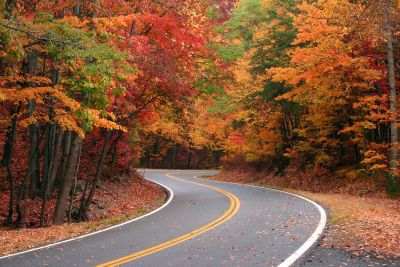Fall Leaf Life Cycle
There is a scientific answer to why do leaves change colors in the autumn. The fall leaf life cycle starts with the end of summer and the shortening of the days. As the days get shorter, the tree does not have enough sunlight to make food for itself. Rather than struggle to make food through the winter, it shuts down. It stops producing chlorophyll and allows its fall leaves to die. When the tree stops producing chlorophyll, the green color leaves the foliage and you are left with the “true color” of the leaves. Leaves are naturally orange and yellow. The green just normally covers this up. As the chlorophyll stops flowing, the tree starts to produce anthocyanins. This replaces the chlorophyll and is red colored. So, depending at which point in the fall leaf life cycle the tree is in, the tree will have green, yellow, or orange leaves then red autumn leaf color. Some trees produce anthocyanins faster than others, meaning that some trees skip right over the yellow and orange color stage and go straight into the red leaf stage. Either way, you end up with a brilliant display of leaves changing color in the fall.
Why Fall Leaves Change Colors Differently Year to Year
You may have noticed that some years the fall leaf display is absolutely magnificent while other years the leaves are positively blah– brown even. There are two reasons for both extremes. The fall leaves’ pigment is susceptible to sunlight. If you have a bright, sunny fall, your tree will be a little blah because the pigments are breaking down quickly. If your leaves end up brown, it is because of cold. While leaves changing color in the fall are dying, they are not dead. A cold snap will kill the leaves the same as it will on the leaves of most your other plants. Just like your other plants, when the leaves are dead, they turn brown. While maybe knowing why do leaves change colors in the autumn may take some of the magic out of leaves changing color in the fall, it cannot take any of the beauty away.
